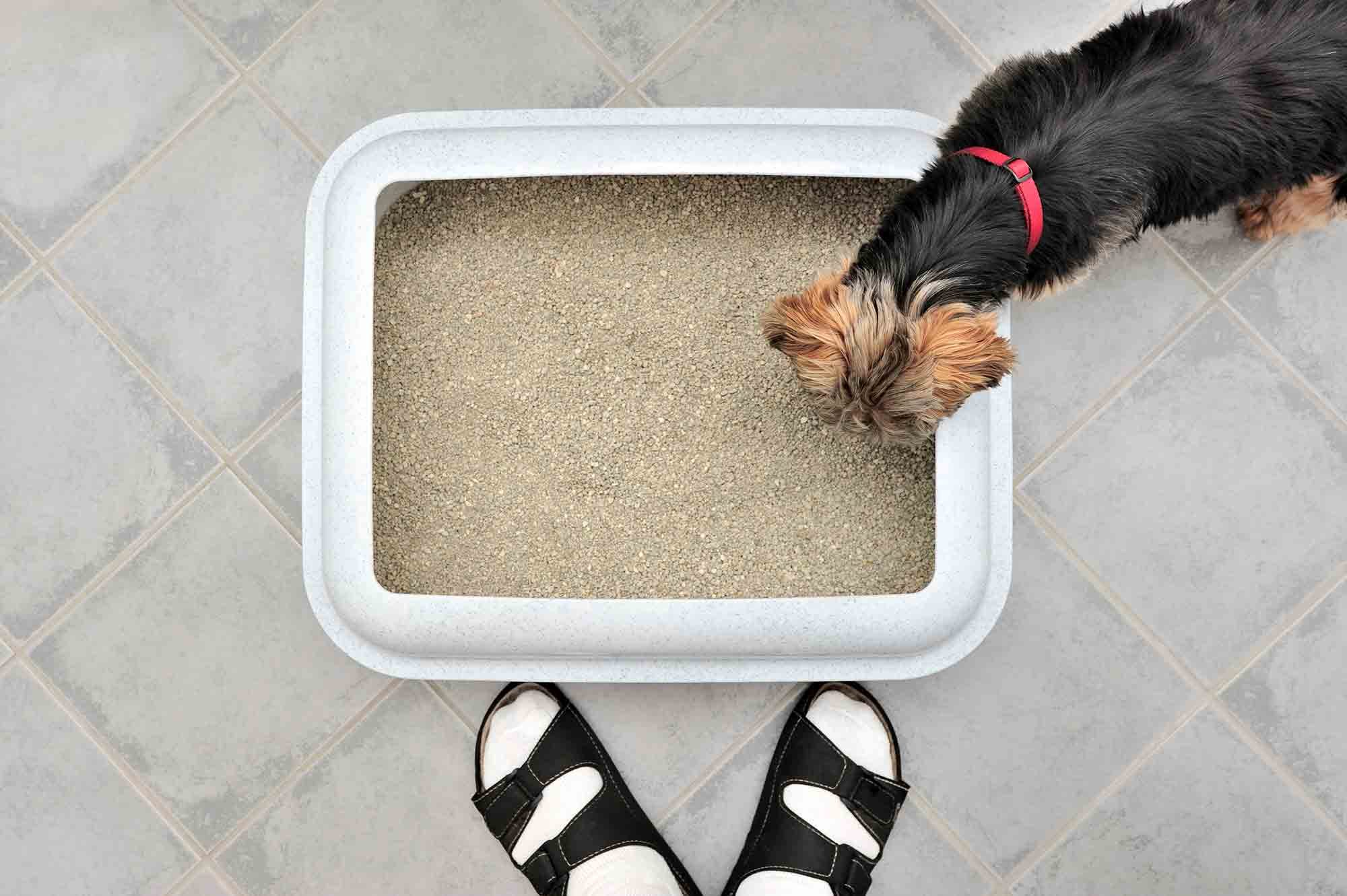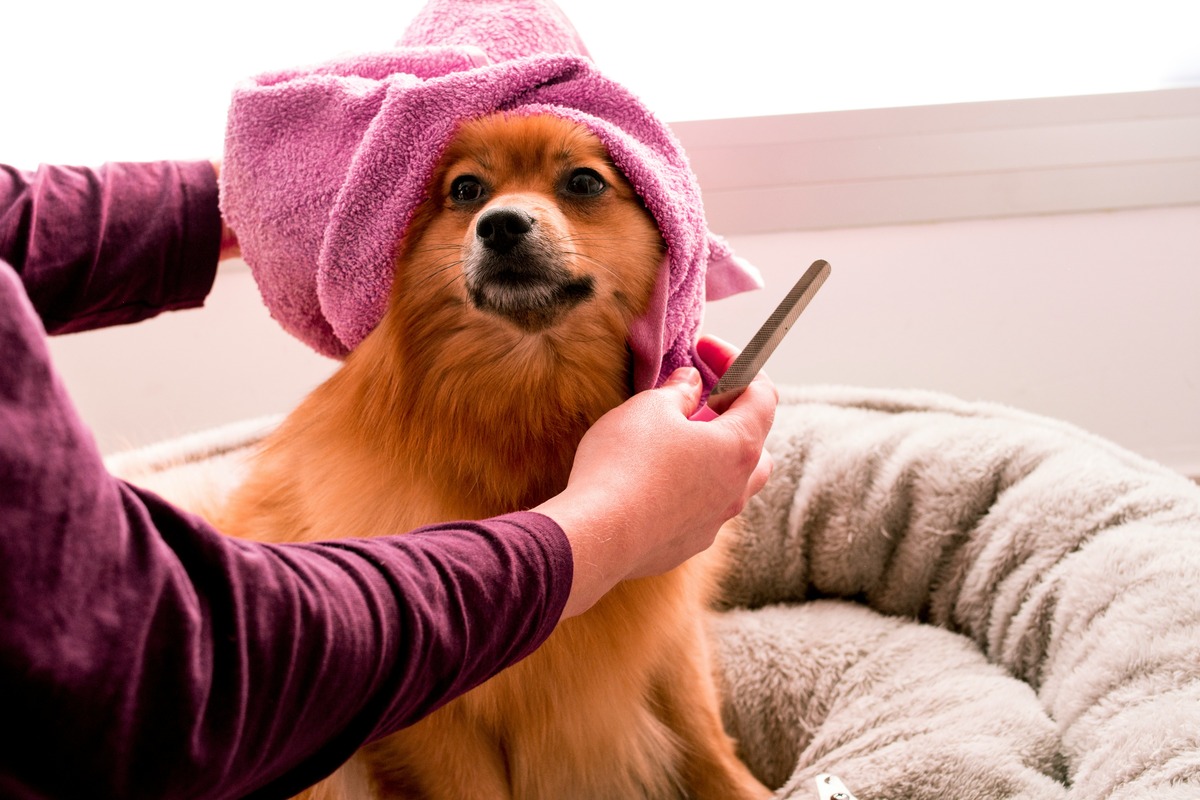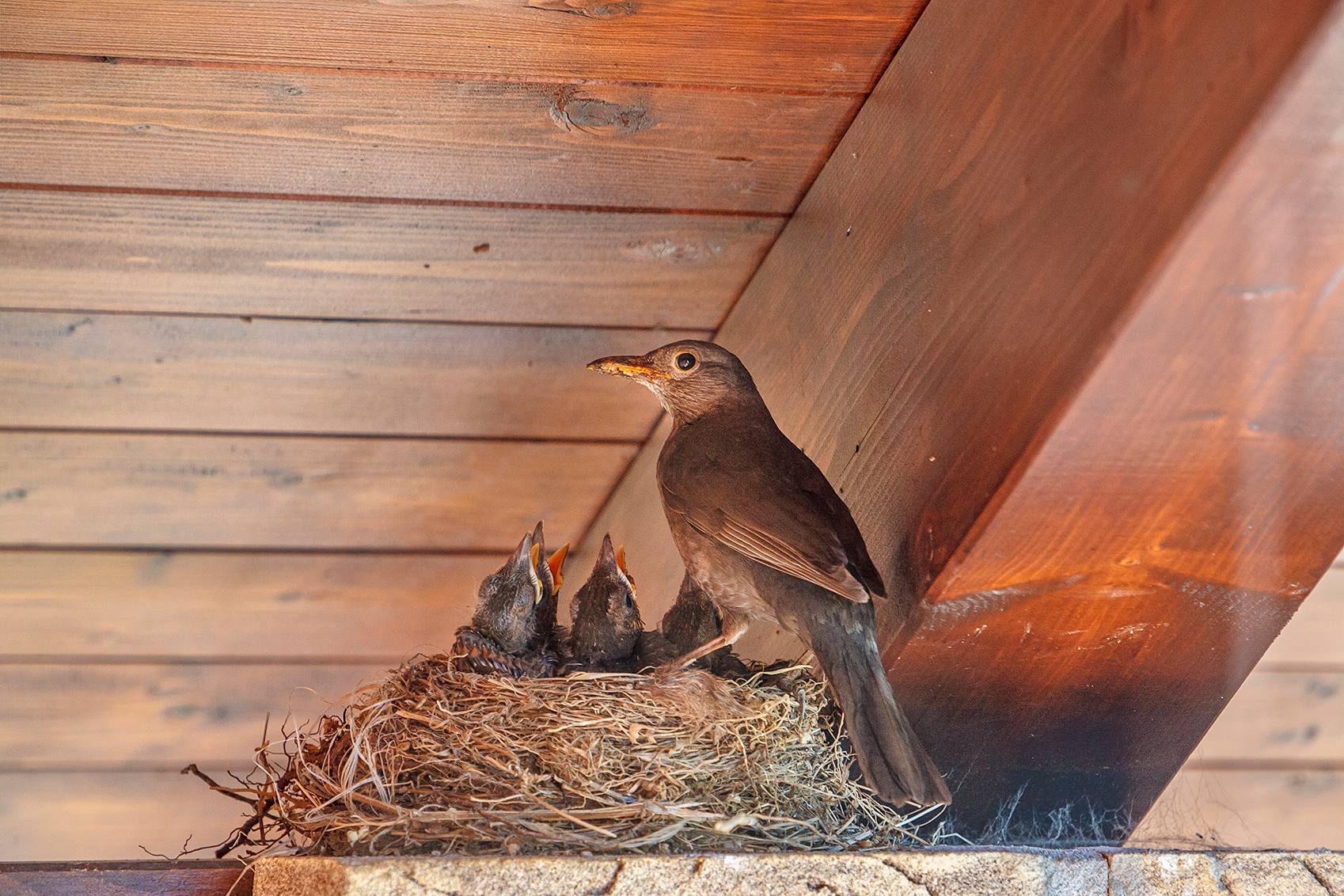Home>Pets & Animals>10 Foolproof Ways To Prevent Your Dog From Going Near The Litter Box


Pets & Animals
10 Foolproof Ways To Prevent Your Dog From Going Near The Litter Box
Published: February 20, 2024
Discover 10 effective strategies to keep your dog away from the litter box. Protect your pet and maintain a clean living environment. Ideal for pet owners and animal lovers.
(Many of the links in this article redirect to a specific reviewed product. Your purchase of these products through affiliate links helps to generate commission for Noodls.com, at no extra cost. Learn more)
Table of Contents
Introduction
When you're a pet parent, there's nothing quite like the joy of having a furry companion by your side. Dogs, with their boundless energy and unwavering loyalty, bring immense happiness to our lives. However, as much as we adore our canine friends, there are certain behaviors that can be quite perplexing and even a little frustrating. One such behavior that many dog owners encounter is their furry friend's curious fascination with the litter box.
The litter box, a sanctuary for our feline friends, can become a source of fascination for dogs. Whether it's the intriguing scent, the allure of the cat's domain, or simply a mischievous exploration, dogs seem to be drawn to the litter box like a moth to a flame. While this behavior may seem harmless at first glance, it can pose various risks to your dog's health and well-being. From ingesting cat feces, which can lead to gastrointestinal issues, to potential exposure to parasites or bacteria, the consequences of this behavior can be concerning.
Thankfully, there are numerous strategies and preventive measures that can help curb your dog's interest in the litter box. By understanding the root causes of this behavior and implementing effective solutions, you can create a safe and harmonious environment for both your dog and your feline companion. In this comprehensive guide, we will explore ten foolproof ways to prevent your dog from going near the litter box. From practical tips on maintaining a clean litter box to utilizing deterrents and providing alternative spaces for your dog, we'll cover a range of strategies to address this common canine quirk.
So, if you've ever found yourself exasperated by your dog's persistent attempts to sneak a peek or even indulge in the contents of the litter box, fear not. With the right approach and a touch of patience, you can successfully discourage this behavior and foster a peaceful coexistence between your beloved pets. Let's delve into the world of pet behavior and discover how to tackle this puzzling predicament with confidence and compassion.
Understanding the Problem
Understanding the root causes of your dog's fascination with the litter box is the first step towards addressing this perplexing behavior. Dogs are naturally curious creatures, and their inquisitive nature often leads them to explore unfamiliar scents and environments. In the case of the litter box, several factors may contribute to your dog's interest:
-
Sensory Appeal: Dogs possess an incredibly keen sense of smell, far superior to that of humans. The enticing aroma of cat feces and the unique scent of the litter itself can be irresistibly intriguing to your dog. This olfactory allure may prompt them to investigate the litter box, driven by their instinctual curiosity.
-
Exploratory Behavior: Dogs are known for their exploratory tendencies, and the litter box represents a novel and intriguing space within their home environment. The presence of another pet's scent and the allure of a designated "forbidden" area can pique their interest, leading to repeated attempts to approach the litter box.
-
Opportunistic Eating: In some cases, dogs may be drawn to the litter box due to the presence of undigested food particles in the cat's feces. This opportunistic behavior, driven by the prospect of finding a snack, can become a habit if not addressed promptly.
-
Social Dynamics: Dogs are highly attuned to social hierarchies and dynamics within the household. The litter box, being a significant territory marker for the cat, may attract your dog's attention as they seek to understand and assert their position within the shared living space.
By recognizing these underlying factors, you can gain valuable insights into your dog's behavior and tailor your approach to effectively discourage their interest in the litter box. With a deeper understanding of the motivations driving this behavior, you can implement targeted strategies to redirect your dog's focus and create a harmonious living environment for all your furry companions.
Keeping the Litter Box Clean
Maintaining a pristine litter box is paramount not only for the health and well-being of your feline friend but also for deterring your dog's interest in this area. A clean litter box not only minimizes odors but also reduces the appeal for dogs seeking out the contents within. Here are some essential tips for keeping the litter box clean:
-
Regular Scooping: Make it a habit to scoop the litter box at least once a day, removing any clumps and solid waste. This not only prevents odors from permeating the area but also ensures that there is less enticing material for your dog to investigate.
-
Quality Litter: Choosing a high-quality, clumping litter can make a significant difference in maintaining cleanliness. Clumping litter makes it easier to remove waste efficiently, keeping the box fresher for longer periods.
-
Deep Cleaning: In addition to daily scooping, schedule regular deep cleanings of the litter box. Empty the entire contents, wash the box with mild soap, and refill it with fresh litter. This thorough cleaning helps eliminate residual odors and keeps the box inviting for your cat while reducing the appeal for your dog.
-
Placement: Consider the strategic placement of the litter box. Position it in an area that is easily accessible to your cat but out of reach for your dog. Elevated or enclosed litter boxes can provide a safe haven for your cat while deterring your dog from accessing the contents.
-
Odor Control: Utilize odor-neutralizing products designed specifically for cat litter. These can help minimize odors, making the litter box less appealing to your dog's sensitive nose.
By implementing these measures, you can create an environment that is less enticing for your dog while ensuring that your cat has a clean and inviting space for their essential needs. A clean litter box not only promotes good hygiene but also plays a crucial role in deterring your dog from venturing near this feline sanctuary.
Using Deterrents
Incorporating deterrents can be an effective strategy to dissuade your dog from approaching the litter box. By utilizing scents, barriers, and other deterrent methods, you can create an environment that discourages your dog's curiosity and redirects their attention elsewhere.
Citrus-Based Scents
Dogs have a strong aversion to citrus scents, making them an excellent natural deterrent. Consider placing citrus-scented air fresheners or diffusers near the litter box to create an invisible barrier that discourages your dog from getting too close. Additionally, citrus-scented cleaning products can be used to wipe the area around the litter box, further reinforcing the aversion.
Motion-Activated Devices
Motion-activated deterrents, such as ultrasonic alarms or compressed air canisters, can startle your dog when they approach the litter box. These devices emit a sudden sound or burst of air, creating a negative association with the area and deterring further exploration.
Physical Barriers
Installing physical barriers around the litter box can prevent your dog from accessing it. Consider using baby gates, pet gates, or other barriers that allow your cat to pass through while restricting your dog's access. This approach provides a clear visual cue to your dog that the litter box is off-limits.
Bitter-Tasting Sprays
Bitter-tasting sprays, designed to discourage dogs from chewing on furniture or other items, can also be applied to the area surrounding the litter box. The unpleasant taste serves as a deterrent, dissuading your dog from approaching or investigating the litter box.
Positive Reinforcement
In addition to deterrents, it's essential to reinforce positive behaviors. Whenever your dog shows disinterest in the litter box or redirects their attention to a designated toy or activity, offer praise and rewards. This positive reinforcement helps to solidify the desired behavior and encourages your dog to seek out alternative, more appropriate activities.
By implementing these deterrent strategies, you can effectively communicate to your dog that the litter box area is off-limits while providing positive reinforcement for desirable behaviors. This multi-faceted approach can significantly reduce your dog's interest in the litter box and promote a harmonious coexistence between your canine and feline companions.
Providing Alternative Spaces
Creating alternative spaces for your dog can redirect their attention away from the litter box and offer them engaging and rewarding environments within your home. By designating specific areas and providing enriching activities, you can effectively channel your dog's energy and curiosity towards more suitable outlets. Here are several strategies for providing alternative spaces for your dog:
Interactive Toys and Puzzles
Introducing interactive toys and puzzles can captivate your dog's interest and provide mental stimulation. Toys that dispense treats or require problem-solving skills can keep your dog engaged and mentally challenged, offering a rewarding alternative to exploring the litter box. Consider puzzle feeders, treat-dispensing balls, or interactive toys that encourage active play and cognitive engagement.
Designated Play Areas
Establishing designated play areas within your home can create a clear boundary between your dog's recreational space and the litter box. Set up a designated play corner or area equipped with your dog's favorite toys, comfortable bedding, and interactive elements. This designated space serves as a positive and inviting environment where your dog can engage in play and relaxation.
Outdoor Exploration
If feasible, allocate time for outdoor activities and exploration. Taking your dog for regular walks, visits to the dog park, or engaging in outdoor games can fulfill their need for physical exercise and mental stimulation. Outdoor exploration provides a dynamic and enriching experience, allowing your dog to satisfy their natural curiosity in a stimulating outdoor environment.
Interactive Feeding Stations
Transform mealtime into an interactive and engaging experience by utilizing interactive feeding stations. Food puzzles, slow feeder bowls, or interactive feeding toys can turn mealtime into a mentally stimulating activity, providing your dog with a rewarding and engaging alternative to investigating the litter box.
Enrichment Activities
Engage your dog in enrichment activities that cater to their natural instincts and behaviors. Activities such as hide-and-seek games, scent-based treasure hunts, or obedience training sessions can provide mental and physical enrichment, redirecting your dog's focus towards constructive and stimulating pursuits.
By implementing these alternative spaces and activities, you can effectively redirect your dog's attention away from the litter box and towards enriching and rewarding experiences. Providing engaging and stimulating alternatives not only discourages unwanted behaviors but also fosters a positive and fulfilling environment for your canine companion.
Training Your Dog
Training your dog to respect boundaries and understand appropriate behaviors around the litter box is a fundamental aspect of addressing their curiosity. Through positive reinforcement and consistent training, you can effectively communicate the expected behaviors and redirect your dog's focus towards more suitable activities.
Positive Reinforcement
Utilize positive reinforcement techniques to encourage desirable behaviors around the litter box. When your dog shows disinterest in approaching the litter box or responds to redirection cues, such as "leave it" or "come away," offer verbal praise, affection, and rewards. Positive reinforcement creates a positive association with obeying commands and respecting boundaries, reinforcing the desired behaviors.
Redirected Focus
Teach your dog alternative behaviors and redirect their focus towards designated activities. Engage your dog in interactive play, obedience training, or mental stimulation exercises when they show signs of approaching the litter box. By redirecting their attention towards engaging and rewarding activities, you can effectively shift their focus away from the litter box.
Boundary Training
Establish clear boundaries around the litter box area through consistent training. Use verbal cues, such as "stay" or "leave it," to communicate the boundaries to your dog. With patience and repetition, your dog can learn to respect the designated boundaries and understand that the litter box area is off-limits.
Desensitization Techniques
Gradually desensitize your dog to the presence of the litter box by incorporating controlled exposure and positive reinforcement. Introduce your dog to the vicinity of the litter box while engaging in enjoyable activities or receiving rewards. Over time, this desensitization process can help reduce their curiosity and diminish the allure of the litter box.
Professional Training Support
Seeking guidance from professional dog trainers or behaviorists can provide valuable insights and tailored strategies for addressing your dog's curiosity towards the litter box. Professional trainers can assess your dog's behavior, identify underlying triggers, and develop a customized training plan to address the specific challenges you are facing.
By incorporating these training techniques, you can effectively communicate boundaries, redirect your dog's focus, and instill positive behaviors around the litter box. Consistency, patience, and positive reinforcement are key elements in shaping your dog's behavior and fostering a harmonious coexistence with your feline companion.
Seeking Professional Help
Seeking professional assistance can be a valuable resource for pet owners facing challenges related to their dog's behavior around the litter box. Professional dog trainers, behaviorists, and veterinarians possess the expertise and experience to provide tailored guidance and effective solutions to address this perplexing issue.
Professional dog trainers specialize in understanding canine behavior and implementing targeted training techniques to modify undesirable behaviors. When seeking professional help, a certified dog trainer can conduct a comprehensive assessment of your dog's behavior, identifying the underlying triggers that contribute to their curiosity towards the litter box. Through personalized training plans and positive reinforcement strategies, a skilled dog trainer can work with you to address the specific challenges your dog exhibits, fostering positive behaviors and respectful boundaries.
Behaviorists, particularly those with expertise in pet behavior and psychology, offer in-depth insights into the motivations driving your dog's fascination with the litter box. By delving into the psychological and emotional aspects of your dog's behavior, a behaviorist can develop a nuanced understanding of the underlying factors at play. This understanding forms the basis for tailored behavior modification plans, encompassing desensitization techniques, positive reinforcement, and environmental adjustments to mitigate your dog's interest in the litter box.
In some cases, consulting with a veterinarian may be beneficial, especially if your dog's behavior poses potential health risks or if there are underlying medical considerations. A veterinarian can conduct a thorough health assessment to rule out any medical issues that may contribute to your dog's behavior. Additionally, they can offer insights into dietary adjustments, nutritional supplements, or medical interventions that may help address underlying triggers, such as dietary deficiencies or gastrointestinal sensitivities.
Professional help provides a holistic approach to addressing your dog's behavior around the litter box, taking into account their unique personality, environmental factors, and potential health considerations. By collaborating with experienced professionals, you can gain valuable guidance, tailored strategies, and ongoing support to create a harmonious living environment for all your beloved pets.
In summary, seeking professional help offers a proactive and informed approach to addressing your dog's curiosity towards the litter box. With the expertise and guidance of skilled professionals, you can navigate this behavioral challenge with confidence and compassion, ultimately fostering a balanced and peaceful coexistence among your furry companions.
Using Technology
In the digital age, technology offers innovative solutions to address pet behavior challenges, including a dog's curiosity towards the litter box. Leveraging technological advancements can provide effective deterrents and monitoring tools to manage and modify your dog's behavior in proximity to the litter box.
Automated Deterrent Systems
Automated deterrent systems, such as motion-activated devices equipped with sensors and alarms, offer a high-tech approach to dissuading dogs from approaching the litter box. These devices can detect your dog's presence near the designated area and emit a sudden sound, ultrasonic signal, or burst of air, effectively deterring further exploration. The seamless integration of these automated systems into your home environment provides a proactive and consistent deterrent, reducing your dog's inclination to approach the litter box.
Smart Pet Gates and Barriers
Smart pet gates and barriers equipped with motion sensors and remote control capabilities offer a technologically advanced solution to restrict your dog's access to the litter box area. These smart barriers can be programmed to allow seamless passage for your cat while preventing your dog from entering the restricted zone. With customizable settings and remote monitoring features, smart pet gates provide a convenient and effective means of creating physical boundaries, ensuring the litter box remains inaccessible to your dog.
Remote Monitoring Cameras
Utilizing remote monitoring cameras with live streaming and motion detection features enables pet owners to observe their dog's behavior around the litter box from a distance. These cameras provide real-time visibility, allowing you to intervene or redirect your dog's attention when they approach the restricted area. Additionally, the ability to remotely access and monitor your home environment through mobile applications offers peace of mind and facilitates proactive intervention to discourage unwanted behaviors.
Automated Feeding and Distraction Devices
Incorporating automated feeding devices and interactive distraction tools can redirect your dog's focus away from the litter box. Programmable feeding stations dispense treats or meals at scheduled intervals, providing a rewarding and engaging alternative to investigating the litter box. Similarly, interactive distraction devices equipped with motion sensors and customizable play modes can captivate your dog's attention, offering mental stimulation and diversion from the litter box area.
By embracing technological solutions, pet owners can implement proactive and effective measures to manage their dog's behavior around the litter box. The seamless integration of automated deterrents, smart barriers, remote monitoring, and interactive devices empowers pet owners to create a harmonious living environment for their canine and feline companions.
Monitoring Your Dog's Behavior
Monitoring your dog's behavior around the litter box is a crucial aspect of addressing their curiosity and ensuring a safe and harmonious environment for all your pets. By observing and understanding your dog's actions, you can gain valuable insights into their motivations, triggers, and responses, enabling you to implement targeted strategies to discourage unwanted behaviors.
One of the fundamental methods of monitoring your dog's behavior is through attentive observation. Take note of any patterns or cues that precede your dog's attempts to approach the litter box. This may include specific times of the day, environmental stimuli, or interactions with your cat. By identifying these patterns, you can anticipate and intervene before your dog engages in the undesired behavior.
In addition to direct observation, utilizing remote monitoring tools can provide valuable insights into your dog's behavior when you are not present. Remote cameras equipped with motion detection features allow you to observe your dog's activities around the litter box from a distance. This real-time visibility enables you to assess the frequency and circumstances of your dog's interactions with the litter box, empowering you to intervene or implement deterrent measures as needed.
Furthermore, maintaining a behavior log can be a beneficial tool for tracking your dog's progress and identifying any changes in their behavior over time. Record observations related to your dog's proximity to the litter box, their responses to redirection cues, and any notable triggers or environmental factors. This systematic approach can help you identify trends, assess the effectiveness of implemented strategies, and make informed adjustments to your approach.
Collaborating with other members of your household to monitor your dog's behavior can provide comprehensive insights and support. By sharing observations and coordinating efforts to redirect your dog's focus, you can create a unified approach to managing their curiosity towards the litter box. Consistency in monitoring and intervention reinforces the boundaries and expectations established for your dog's behavior.
By actively monitoring your dog's behavior, both through direct observation and the use of technological tools, you can gain a deeper understanding of their interactions with the litter box. This informed approach allows you to tailor your strategies, implement targeted deterrents, and provide alternative outlets for your dog's energy and curiosity. Through consistent monitoring and proactive intervention, you can effectively discourage your dog's interest in the litter box and foster a harmonious coexistence among all your beloved pets.
Consistency is Key
Consistency forms the cornerstone of successful behavior modification and training efforts when addressing your dog's curiosity towards the litter box. By maintaining a consistent approach across all aspects of your interactions with your dog, you establish clear expectations, reinforce desired behaviors, and create a structured environment that supports long-term success.
Consistency begins with the implementation of established rules and boundaries regarding the litter box area. Communicate these boundaries to all members of your household, ensuring that everyone follows the same guidelines when interacting with the dog and managing their access to the litter box. Consistent reinforcement of these boundaries through verbal cues, redirection, and positive reinforcement helps your dog understand and respect the established limits.
Incorporate consistency into your training and redirection efforts by utilizing the same commands, cues, and redirection techniques consistently. Whether it's using verbal cues such as "leave it" or "come away" or employing specific deterrent methods, such as citrus-based scents or motion-activated devices, the consistent application of these strategies reinforces the message that the litter box area is off-limits for your dog.
Consistency also extends to the provision of alternative spaces and activities for your dog. Designate specific play areas, interactive toys, and enrichment activities, and ensure that these options remain consistently available to redirect your dog's focus away from the litter box. By consistently offering engaging alternatives, you provide your dog with predictable outlets for their energy and curiosity, reducing their inclination to seek out the litter box.
Furthermore, consistency in monitoring your dog's behavior and intervening when necessary reinforces the boundaries and expectations established for their interactions with the litter box. Regular observation, documentation, and collaboration with other household members ensure that your approach remains steadfast and aligned with the goal of discouraging your dog's interest in the litter box.
Consistency in all aspects of your approach, from training and redirection to monitoring and environmental management, fosters a clear and predictable framework for your dog. This predictability helps your dog understand the boundaries and expectations, ultimately leading to a reduction in their curiosity towards the litter box and the development of more appropriate behaviors.
In summary, consistency serves as a guiding principle in addressing your dog's curiosity towards the litter box. By maintaining a consistent approach across training, redirection, monitoring, and environmental management, you create a structured and supportive environment that reinforces positive behaviors and discourages unwanted interactions with the litter box.
Conclusion
In conclusion, addressing your dog's curiosity towards the litter box requires a multifaceted approach that encompasses understanding, proactive measures, and consistent management. By recognizing the underlying motivations driving your dog's behavior and implementing targeted strategies, you can create a harmonious living environment for both your canine and feline companions.
Understanding the sensory appeal, exploratory tendencies, and social dynamics that contribute to your dog's interest in the litter box provides valuable insights into their behavior. This understanding forms the basis for implementing practical solutions, such as maintaining a clean litter box, utilizing deterrents, providing alternative spaces, and incorporating consistent training and monitoring.
Maintaining a pristine litter box, utilizing citrus-based scents, motion-activated deterrents, and physical barriers, and offering interactive toys and designated play areas for your dog are essential components of deterring their curiosity. Additionally, positive reinforcement, consistent training, and seeking professional help when necessary contribute to a comprehensive approach to modifying your dog's behavior.
Embracing technological solutions, such as automated deterrent systems, smart pet gates, and remote monitoring tools, offers innovative means of managing your dog's interactions with the litter box. These technological advancements provide proactive measures and real-time insights, enhancing your ability to redirect your dog's focus and discourage unwanted behaviors.
Consistency emerges as a fundamental principle throughout the entire process, from establishing clear boundaries to implementing training and monitoring efforts. Consistent reinforcement of expectations, redirection techniques, and the provision of alternative outlets reinforces the message that the litter box area is off-limits for your dog.
By integrating these strategies and maintaining a consistent approach, you can effectively discourage your dog's curiosity towards the litter box, creating a safe and harmonious environment for all your beloved pets. With patience, understanding, and a proactive mindset, you can navigate this behavioral challenge with confidence and compassion, ultimately fostering a balanced and peaceful coexistence among your furry companions.







